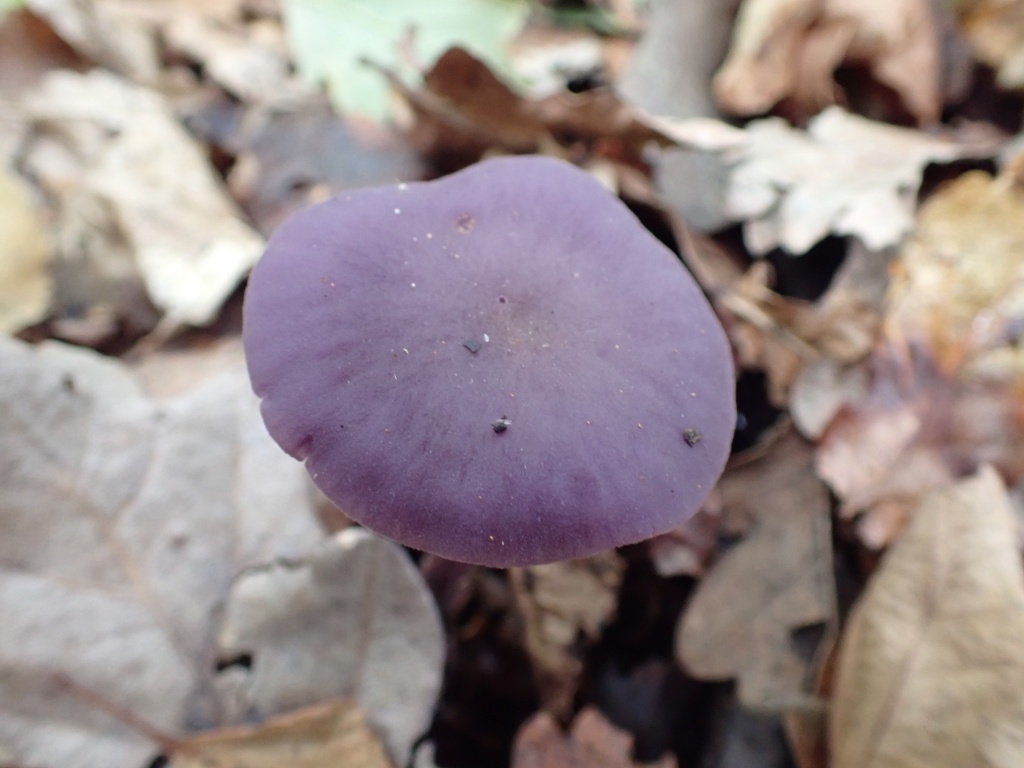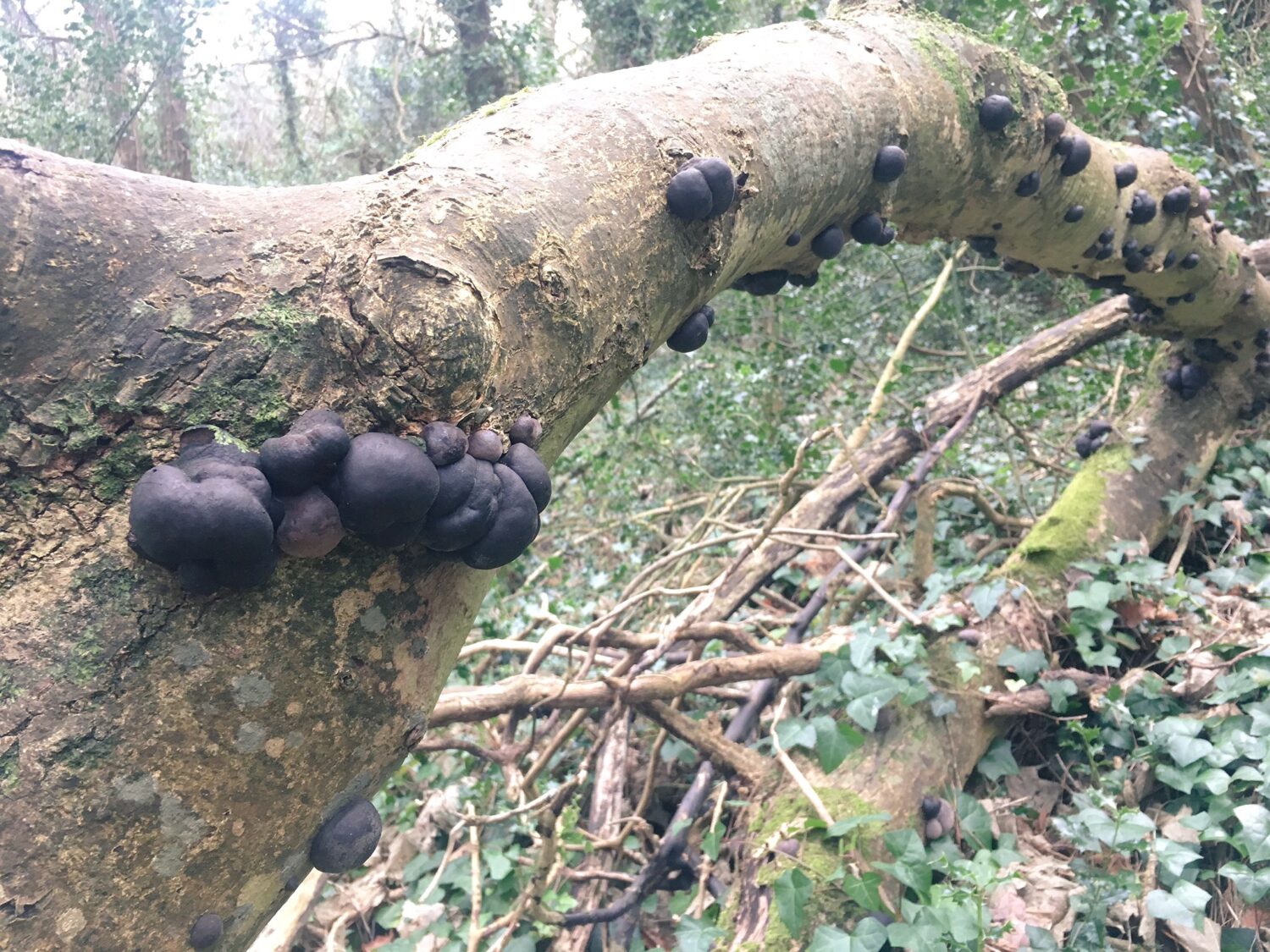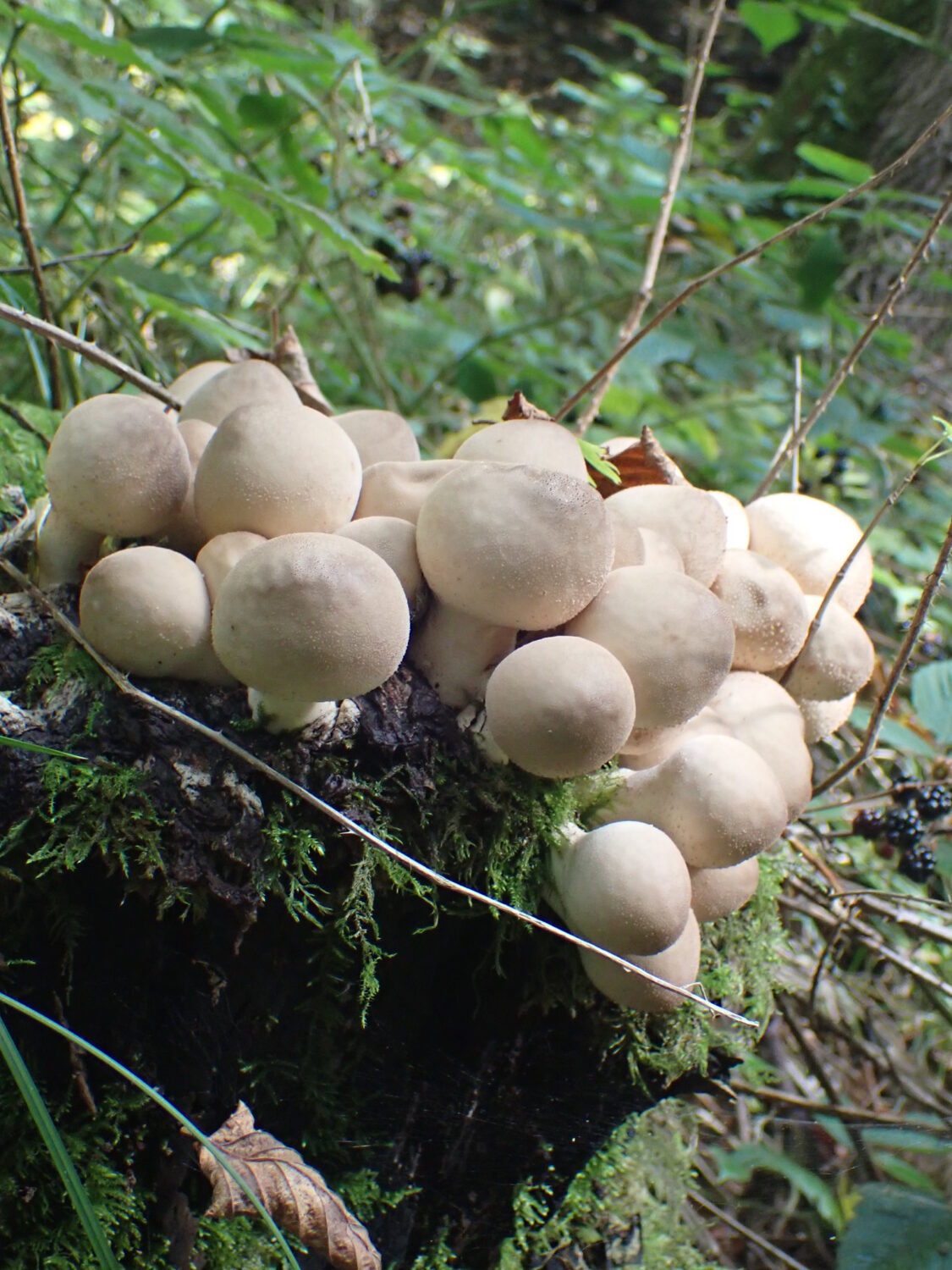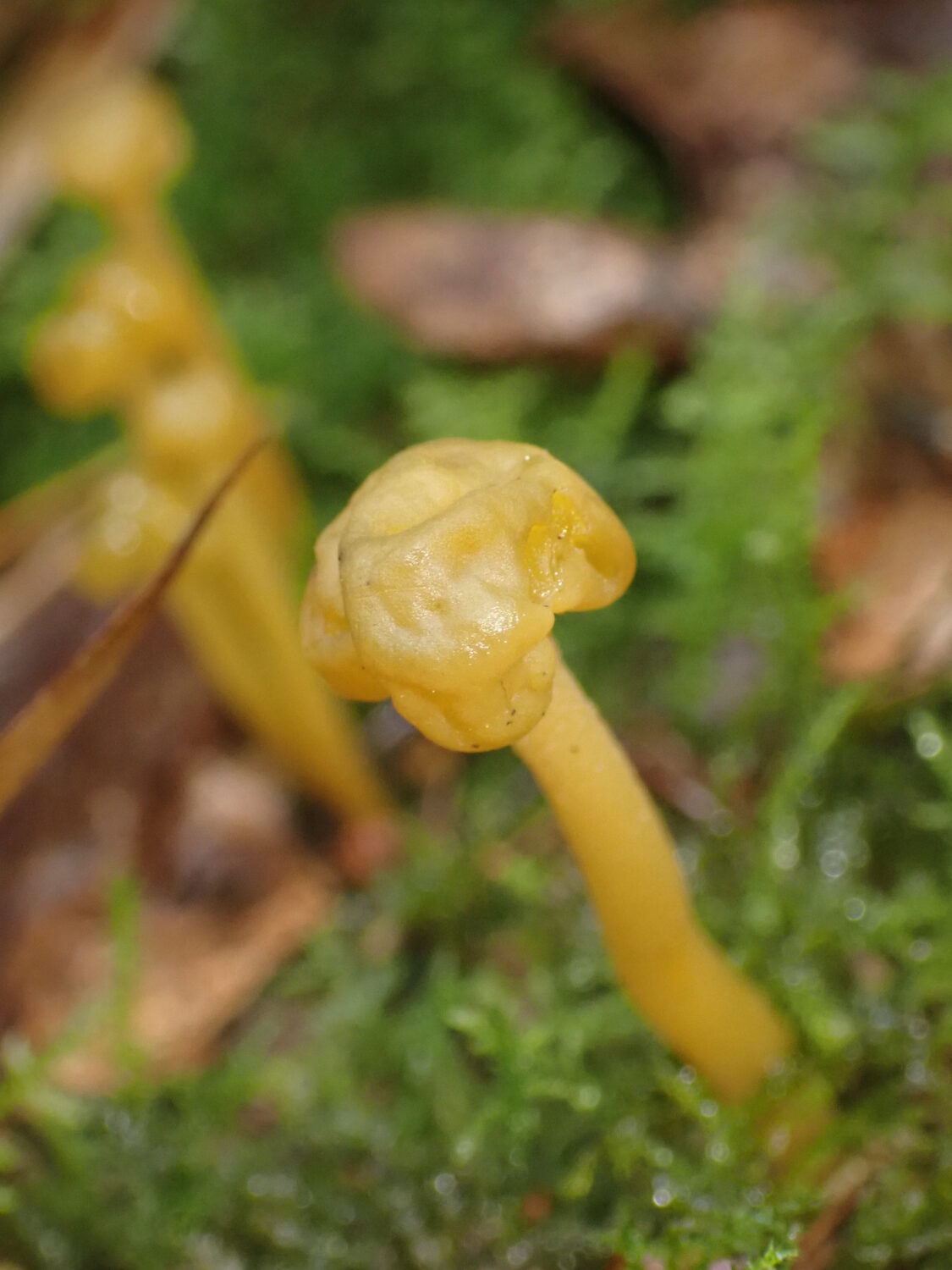While migrant birds are overhead, look down at the woodland floor and there is a fascinating range of fungi to be discovered. Take a closer look at ten distinctive fungi to find across the North East this autumn.
Fungi make up an entire kingdom of their own with more than 15,000 species known in Britain. Perhaps most known for their edible or poisonous properties, fungi are much underrated for the vital role they play within ecosystems; as nutrient recyclers, as a source of food for other species, and as the life support system for many plants through the cooperative partnerships they form.
Many are fascinating and bizarre, have clever tricks up their sleeve to reproduce, or are rich in interesting histories and folklore. Here are ten distinctive fungi you can encounter across the North East this autumn.

Candlesnuff fungus
With a black stalk and white powdery tip, this fungus resembles a snuffed-out candlewick. Growing in clusters, it can be found on decaying wood.
The stalks are sometimes forked to resemble antlers, giving rise to its alternative name ‘Stag’s-horn fungus’. The powdery tips contain the spores to disperse and reproduce.
While not visible to the naked eye, it is bioluminescent and emits light from the interaction between the phosphorus it contains and oxygen in the air.

Fly Agaric
The classic toadstool depicted in fairy-tales, Fly Agaric has a striking red cap with white markings and a white stalk.
The story behind the name is less of a fairy-tale however as it relates to its poisonous properties and its historic usage as a fly insecticide.
Found in woodland typically around Birch, this fungus forms a mutualistic relationship with the roots of Birch who both benefit through the exchange of nutrients. Initially, a domed cap, the fruitbody flattens out as it ages.

Amethyst Deceiver
Amethyst Deceiver is a vibrant, deep purple fungus found growing amongst moss in woodlands. Initially domed, the caps flatten as they mature.
This fungus is particularly common where there are Beech trees as it forms a mutualistic relationship with Beech.
While distinctive, it changes to a buff colour when dry and aged, giving rise to the name ‘deceiver’.

Bird’s Nest fungus
Found on branches and twigs, this fungus looks like a nest with a clutch of white eggs.
These ‘eggs’ contain spores and are dispersed by the impact of raindrops. Attached to the eggs are short cords that wrap around any twig or branch it contacts.
Easily overlooked, look out for this tiny fungus on decaying wood, twigs, bark fragments, and even wood chips or mulch.

Collared Earthstar
A species that looks more suited to a coral reef, Collared Earthstars are found amongst leaf litter in woodland.
The outer skin of the fruiting body peels back into pointed rays. These rays then curl under to form a saucer on which a spore sac sits.
The sac contains spores that are dispersed by the impact of wind and raindrops.

King Alfred’s Cake
Resembling round lumps of coal, this fungus may not appear particularly impressive but behind the appearance is a long history.
Mimicking coal in both appearance and ability to smoulder, it was used as tinder and this dates back to 7,000 years ago.
Its name also refers to a tale about the 9th century King, King Alfred. Fleeing from Vikings, legend has it that he took refuge in a peasant’s house who tasked him with watching over her baking cakes. Left to blacken and burn, this fungus resembles a cake left to this very fate.

Common Stinkhorn
If there was a prize for the strangest fungus, Stinkhorn would definitely be a contender!
Its cap and stalk emerge from an ‘egg’ on the woodland floor. Stinkhorns have caps that are covered in a smelly olive-green substance (gleba) that attracts flies.
The gleba contains spores and are dispersed via the feet of flies. Once the gleba is removed by flies, a net-like pattern is revealed on the white cap.

Jelly Ear
The name describes this fungus perfectly! Pink and gelatinous, this fungus can be shaped such that it resembles a human ear.
Jelly Ear is often found growing in clusters and drooping from decaying branches. It is particularly fond of Elder but can be found on other broadleaved trees.
If it’s pink, ear-like and wobbles like jelly, it’s Jelly Ear!

Shaggy Inkcap
As its name suggests, this fungus has initially a shaggy appearance or ‘lawyer’s wig’ look.
Initially egg-shaped and opening into a bell, the cap soon darkens and deliquesces into a black liquid to disperse its spores.
It is commonly found in small groups along roadsides, in parkland and lawns.

Stump Puffball
This species is one of the most gregarious fungi and is found on decaying tree stumps.
Its brown fruiting bodies are pestle-shaped to pear-shaped and covered in scales. Once mature, the impact of raindrops and wind disperses its spores via an opening.
There are a number of different puffball species but this is the only species that grows directly on wood.

Have a sighting to share?
You can help monitor and protect North East nature by sharing your fungi finds this autumn.
Records of all species are welcome, wherever you are in the North East.
Submit a sighting today to help track the fortunes of regional wildlife. Every record really does count.